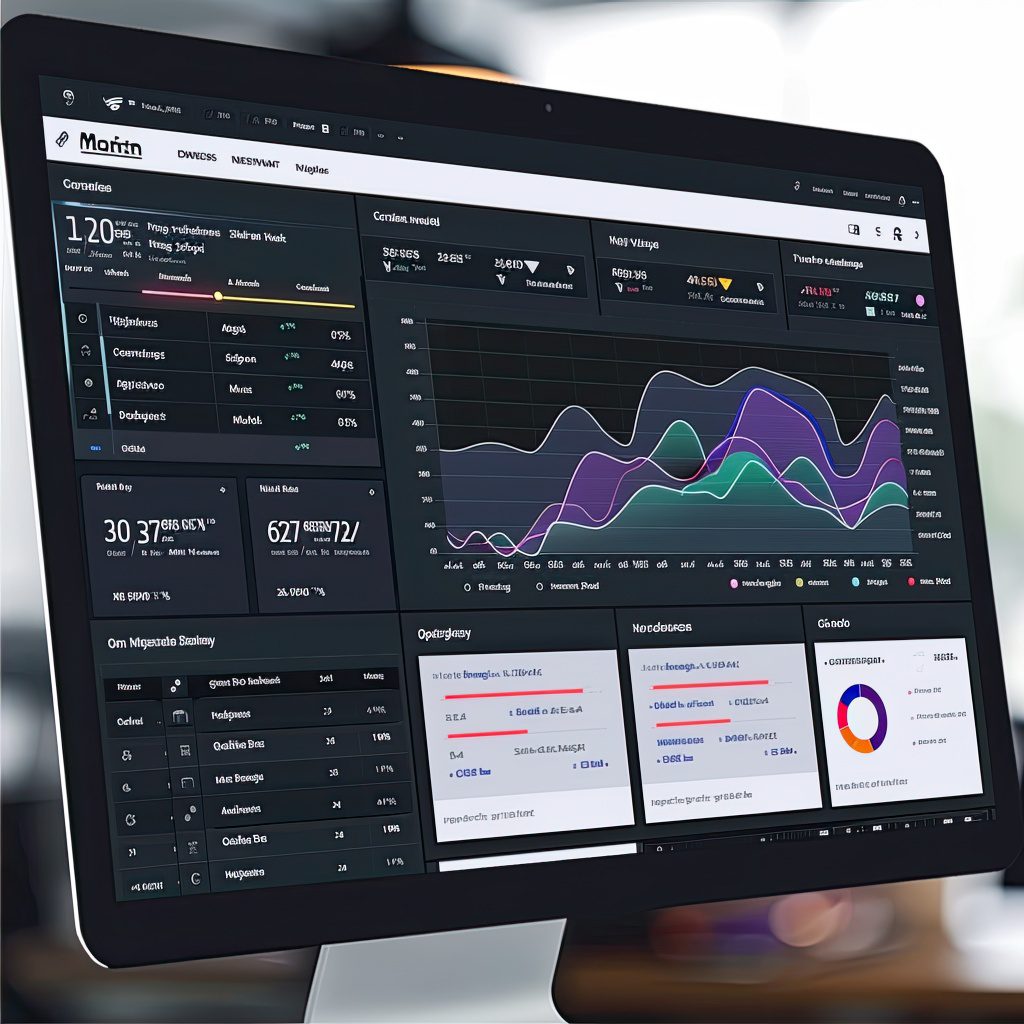Optimizing Use of the Hybrid and Multi-Clouds
Introduction
In today’s digital age, cloud computing has become an integral part of business operations, enabling organizations to scale, innovate, and drive efficiencies. With the rise of hybrid and multi-cloud strategies, businesses now have more flexibility and options to optimize their IT infrastructure. This post explores how to optimize the use of hybrid and multi-cloud environments to maximize benefits, reduce costs, and enhance performance.
Understanding Hybrid and Multi-Clouds
What is Hybrid Cloud?
A hybrid cloud is an IT architecture that combines a private cloud with one or more public cloud services, allowing data and applications to be shared between them. This setup provides greater flexibility and more deployment options, enabling businesses to optimize their existing infrastructure and leverage the scalability of the public cloud.
What is Multi-Cloud?
A multi-cloud strategy involves using multiple cloud services from different providers. Unlike hybrid cloud, which integrates public and private clouds, multi-cloud strictly refers to the use of multiple public clouds. This approach helps organizations avoid vendor lock-in, increase resilience, and access the best services from various providers.
Benefits of Hybrid and Multi-Cloud Strategies
- Flexibility: Organizations can choose the best environment for each workload, balancing performance, security, and cost.
- Scalability: Access to virtually unlimited resources on demand, allowing businesses to scale up or down as needed.
- Cost Efficiency: Optimize costs by leveraging the most cost-effective cloud services for different tasks.
- Disaster Recovery: Enhanced disaster recovery capabilities by distributing workloads across multiple clouds.
- Innovation: Access to cutting-edge technologies and services from different cloud providers.
Challenges of Hybrid and Multi-Cloud Strategies
- Complexity: Managing multiple cloud environments can be complex and require advanced skills.
- Security: Ensuring consistent security across different clouds can be challenging.
- Compliance: Meeting regulatory and compliance requirements across multiple jurisdictions.
- Integration: Seamless integration between private and public clouds, and between multiple public clouds.
Optimizing Hybrid and Multi-Cloud Environments
1. Assessing Your Cloud Needs
Before diving into a hybrid or multi-cloud strategy, it’s essential to assess your business needs, objectives, and current IT infrastructure. Consider the following questions:
- What are your performance, security, and compliance requirements?
- Which applications and workloads are suitable for the cloud?
- What are your cost constraints and budget considerations?
Conducting a thorough assessment will help you design a cloud strategy that aligns with your business goals.

2. Selecting the Right Cloud Providers
Choosing the right cloud providers is crucial for the success of your hybrid or multi-cloud strategy. Evaluate potential providers based on their:
- Service Offerings: Ensure they provide the services and technologies you need.
- Performance: Consider the performance benchmarks and SLAs.
- Security: Assess their security measures and compliance certifications.
- Cost: Compare pricing models and total cost of ownership.
Popular cloud providers like Amazon Web Services (AWS), Microsoft Azure, Google Cloud Platform (GCP), and IBM Cloud each have unique strengths. Leveraging the best features from each can optimize your cloud environment.
3. Implementing Robust Security Measures
Security is a top concern in hybrid and multi-cloud environments. Implement robust security measures to protect your data and applications:
- Encryption: Use encryption for data at rest and in transit.
- Identity and Access Management (IAM): Implement strict access controls and multi-factor authentication.
- Monitoring and Logging: Continuously monitor and log activities to detect and respond to security incidents.
- Compliance: Ensure compliance with relevant regulations and standards, such as GDPR, HIPAA, and PCI-DSS.
4. Leveraging Cloud Management Platforms
Cloud management platforms (CMPs) provide a unified interface for managing multiple cloud environments. They help streamline operations, enhance visibility, and optimize resource utilization. Some popular CMPs include:
- VMware vRealize Suite: Offers comprehensive management across private and public clouds.
- IBM Cloud Pak for Multicloud Management: Provides automation and visibility across hybrid and multi-cloud environments.
- Microsoft Azure Arc: Extends Azure management and services to any infrastructure.
Using CMPs can significantly reduce complexity and improve efficiency in managing hybrid and multi-cloud environments.
5. Automating Cloud Operations
Automation is key to optimizing cloud operations and reducing manual intervention. Implement automation tools and practices to manage repetitive tasks, such as:
- Infrastructure as Code (IaC): Use tools like Terraform or AWS CloudFormation to automate the provisioning and management of cloud resources.
- DevOps Practices: Integrate DevOps practices to streamline development, testing, and deployment processes.
- Auto-Scaling: Configure auto-scaling to dynamically adjust resources based on demand.
Automation not only improves efficiency but also enhances consistency and reliability.
6. Optimizing Cost Management
Cost management is crucial in hybrid and multi-cloud environments. Implement cost optimization strategies to ensure you’re getting the best value from your cloud investments:
- Cost Monitoring: Use tools like AWS Cost Explorer, Azure Cost Management, or Google Cloud’s cost management tools to monitor and analyze your spending.
- Right-Sizing: Continuously evaluate and adjust the size of your cloud resources to match your needs.
- Reserved Instances and Savings Plans: Take advantage of reserved instances or savings plans for predictable workloads to reduce costs.
- Multi-Cloud Cost Optimization Tools: Utilize tools like CloudHealth or Cloudability to manage and optimize costs across multiple clouds.

7. Ensuring High Availability and Disaster Recovery
High availability and disaster recovery are critical components of a resilient cloud strategy. Ensure your hybrid and multi-cloud environments are designed to withstand failures and recover quickly:
- Redundancy: Implement redundancy across different cloud providers and regions.
- Backup and Recovery: Regularly back up data and test recovery procedures.
- Failover Mechanisms: Set up automated failover mechanisms to switch workloads to backup environments during outages.
Case Studies: Successful Hybrid and Multi-Cloud Implementations
1. Netflix
Netflix uses a multi-cloud strategy to deliver its streaming services globally. By leveraging multiple cloud providers, Netflix ensures high availability, performance, and resilience. The company uses AWS for the majority of its workloads but also integrates services from GCP to enhance its capabilities.
2. Coca-Cola
Coca-Cola has implemented a hybrid cloud strategy to optimize its IT infrastructure. The company uses private cloud solutions for sensitive data and mission-critical applications while leveraging public cloud services for scalability and innovation. This approach has enabled Coca-Cola to achieve better cost efficiency and operational agility.
Conclusion
Optimizing the use of hybrid and multi-cloud environments is essential for businesses looking to maximize the benefits of cloud computing. By carefully assessing your needs, selecting the right providers, implementing robust security measures, leveraging cloud management platforms, automating operations, managing costs effectively, and ensuring high availability, you can build a resilient and efficient cloud strategy.
Useful Links
- AWS Cloud Management Tools
- Microsoft Azure Cost Management
- Google Cloud Cost Management
- VMware vRealize Suite
- IBM Cloud Pak for Multicloud Management
By implementing these strategies and leveraging the right tools, businesses can effectively optimize their hybrid and multi-cloud environments, ensuring they achieve maximum benefits while maintaining control over costs and performance. Stay tuned for more in-depth articles on cloud computing best practices.



